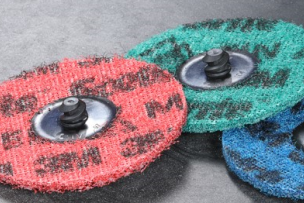Lean Manufacturing: Improving TPM with OEE Calculations and Methods
Manufacturers want the same thing: Zero defects and no unplanned downtime. Achieving that lofty production efficiency goal on the shop floor, however, is another matter. Enter overall equipment effectiveness.
What is OEE?
Companies worldwide use overall equipment effectiveness—better known by its acronym, OEE—to evaluate production floor efficiency. At its core, the OEE method can identify how the shop floor is performing at the equipment level measured against ideal output and quality metrics.
No matter how efficient the shop floor or well-managed the company, everyone faces these common, predictable realities: Machines break, tools wear and people make mistakes. That’s where lean manufacturing and the tenets of TPM have earned a valuable spot in daily operations. Companies that embrace lean principles can whittle away downtime to continuously improve their operations.
Why is OEE important?
Without a method for understanding performance, it can be nearly impossible to figure how and where to improve. OEE simultaneously combines and isolates the dependent aspects of production—output and quality—so everyone can be on the same page. Once captured, the right information gives shop managers and floor associates complete transparency into defects, downtime and a host of key operational performance areas so they can plan accordingly.
How do I understand OEE on the factory floor?
Whether or not everyone in a plant is familiar with OEE, they will recognize its components. Consider the following scenario:
-
A shop is open 40 hours each week, but machine setup and lunch breaks consume 10 of them, so the full plant availability is 75 percent. To boost availability, it might be time to look at quick-change tooling or other ways to reduce downtime.
- During that available time, a machine can produce 10 stainless steel widgets every hour. If it only averages eight widgets every hour, its performance is 80 percent. Is there a problem with the machine that is causing this degraded performance?
- If one of the widgets produced each hour ends up in the scrap bin, the quality level is running at 87.5 percent. It’s time to find out why.
How do I calculate OEE? Hint: There’s no single formula or lump sums.
The digital transformation advisory firm LNS Research says OEE is the product of Availability x Efficiency x Quality (putting the widget factory scenario at just over 50 percent). That suggests an OEE calculation should not be applied on an overall basis, but rather, to each piece of equipment.
Productivity appliance provider Vorne Industries offers both simple and preferred methods of OEE calculation. The first is defined as Good Part Count x Ideal Cycle Time/Planned Production Time. The preferred method breaks down availability, performance and quality into “loss factors” that are then plugged into a similar formula intended to provide a more detailed understanding of manufacturing waste.
Larry Coté, founder of the Ottawa consulting group Lean Advisors, warns that shops must analyze the individual components used in any OEE calculation, rather than assessing performance based on a lump sum.
“OEE is an interesting and convenient measure, but taken at face value it could easily overlook a specific problem,” Coté says. “Machine downtime might be masked by perfect quality levels, for example, or 100 percent uptime could take the sting out of large defect numbers. You really need to dig into each of the three values individually to get a complete picture.”
Greg Giles, executive director of manufacturing execution systems at RedViking, agrees. A single OEE metric makes him happy only when the number is high and everything is humming along.
“It’s important to take a holistic approach to OEE,” Giles says. “If there’s any sort of dip or inconsistency in the value, you need the ability to understand where the problem is, so you can get to the root cause.”
“If there’s any sort of dip or inconsistency in the (OEE) value, you need the ability to understand where the problem is, so you can get to the root cause.”
How do I determine the root cause of poor equipment effectiveness?
One way to discover and identify root cause is through comprehensive data collection and analysis. It might be as simple as asking the machine operator to record failures—such as defective parts, changeover times and unplanned machine stops—on an Excel spreadsheet, assigning a reason code to each. At the end of the week, the results from each machine can be collated and analyzed, after which the detective work can begin.
Initiatives like these—though well-intended—can be cumbersome and time-consuming. The act of collecting OEE data in itself might lead to additional downtime, skewing what might otherwise be acceptable values.
Industry experts agree that the best OEE tools are those that are nearly effortless, automatically collecting machine data—allowing management to spend less time crunching numbers and more time identifying and dealing with root causes. The software approach removes the burden of data entry from the operator, while eliminating any feelings of “big brother is watching.”
Automated collection platforms exist to help shops identify “big losses,” such as equipment stops, slow cycles, process defects, and reduced yields. Once those failures have been identified, performance management tools make it easy to chase down the causes of downtime, take action and begin the cycle again, thereby improving OEE values across the production floor continuously.
Whether a shop enjoys perfect parts and 95 percent uptime, or is scratching its collective head over idle daily machine performance, an OEE initiative is an excellent approach for increasing productivity, quality and efficiency.
- Establish a lean approach that measures current state versus a future ideal state.
- Examine equipment effectiveness with a holistic lens—making sure to dig in to specific, isolated areas where there are issues.
- Consider automated OEE collection and analysis tools to avoid downtime that more manual approaches will add.
What OEE tactics have worked on your shop floor? Share your best tip.





Talk to Us!
Leave a reply
Your email address will not be published. Required fields are marked *